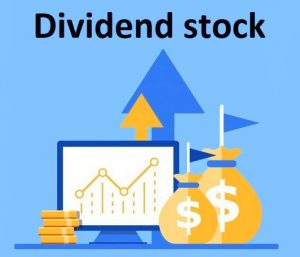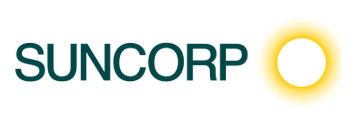Disclosure: Privacy Australia is community-supported. We may earn a commission when you buy a VPN through one of our links. Learn more.
Best ASX Dividend Stocks to Buy in 2024

Not everyone is trying to trade on the stock market in the same way. There is a culturally accepted image of the stock market as the domain of drug-fuelled risk-takers.
People who are addicted to gambling and willing to use anyone’s money but their own to play the markets for a living.
And that is certainly part of the market. But another part of the market likes to take more measured steps towards making money. Of all the trading strategies out there, probably the slowest strategy, with the lowest risk and lowest reward, is putting a focus on dividend stocks over a long period of time.
Table of Contents:
- How Do Dividend Stocks Work
- Looking for the Best Dividend Stocks
- What to Look for in a Dividend Stocks
How Do Dividend Stocks Work? 🔎️
Because people expect the stock market to either make you a fortune or wipe out your savings in one day, they are usually surprised to hear that there is a third option. So, let’s talk about what dividend stocks are and how they work. The first thing you need to understand is that they are passive income.
Most dividend stocks work like this: First, you purchase a number of shares of a company on the Australian Securities Exchange. You have to make sure that the company actually pays a dividend, as not all of them do. And on top of that, lots of them pay worse dividends than others.
Once you buy those shares, then you wait for a certain date. There are two important dates for dividend stocks: The first is the “ex dividend” date.
The Ex Dividend Date ⏰️
You have to hold your dividend stock from the beginning of this day, until the end of this day. Easier said than done, as you watch the value of your dividend stock fluctuate wildly during this time.
The Date of Record 📝️
The other date is the “date of record”. At the end of this day, you are recorded as a holder of the share, and assigned a number of dividend payments according to how many shares you owned.
You will notice that you don’t have to hold the dividend stock by the end of the dividend date of record. Most people will sell (or try to sell) their dividend stock on this date for this reason. But most will get stuck holding onto it, as the dividend stock will lose value equal to the “dividend payment” on that day.
The Dividend Payment 💰️
If you hold a dividend-paying stock in this way, then you receive a dividend payment in an amount determined by two things. First, the company decides how much each shareholder gets paid per share of stock that they own. Second, you have control over how much you get paid by owning shares.
A dividend stock will usually pay something between $.10 and $.50 per share. So, if you own 100 shares, that means between $10 and $50 of a dividend payment. These payments will usually happen every three months, though there are some stocks that pay once a month, and others that pay once a year.
Looking for the Best Dividend Stocks 🔝️
The focus of today is going to be reviewing the 10 best dividend stocks on the ASX right now. This is measuring them based on how much their dividend pays, as well as where the company is right now, and where it might be in the future. The more secure a company is, the better its dividend.
1. BHP Group – Best Overall Dividend Stock
A good dividend stock has different needs than a good stock for any other investment purpose. If you are looking to day trade, your ideal stock will rocket up and down constantly. But if you’re looking to reap good dividends, you need something like BHP Group. They are a mining company based out of Australia and founded in 1851 that focuses on the extraction of metals and natural gas.

An old company in a steady industry is ideal for dividends, which are meant to be held for as long as possible with as little thought or effort put into them as possible. That is exactly what BHP Group provides, along with an exceptionally high dividend payment of $1.62 per share.
Drawbacks 👎️
If one had contemplated investing in BHP Group approximately a year ago, the potential seemed exceptionally promising. However, the imposition of sanctions on Russia has resulted in a surge in the stock prices of numerous natural gas companies. Consequently, these companies have developed a keen interest in electric vehicles, which poses a threat to BHP’s business operations.
Natural gas companies like BHP are still enjoying their time in the sun. But what was once a lifelong investment might be innovated into obsolescence within that lifetime.
Pros
- Works in a high demand industry
- Value has been increasing all year
- Great dividend payment
Cons
- Might crash in the next few years
2. Medibank Private Ltd. – Best Small Cap Medical Dividend Stock
Medical stocks of all shapes and sizes have garnered a lot of interest since the pandemic started. They had a period of floundering, but once the vaccines were released, they all saw huge booms.
Medibank Private is our medical dividend stock of choice for one simple reason: Dividend yield.

You’re going to look up Medibank Private’s dividend and see that it is only $.03. That is not a lot. But that is not the number you should be looking at. The number you should be looking at is how much each individual stock costs. Usually, Medibank trades between $3 and $3.50. That means you get 1% of your investment back with every dividend payment that Medibank gives you.
Smaller dividend stocks like this have huge potential because of that.
Drawbacks 👎️
Medibank is a relatively new company, and a smaller one. For both of those reasons, it should not represent the backbone of your dividend investment strategy. The biggest risk in dividend investment is the possibility that a company pays out such a high dividend that it bankrupts itself over time.
Small dividends like Medibank’s can usually avoid that. But when they have so little capital, you always have to watch out.
Pros
- Medical stocks are still going strong
- Medibank’s specific research projects are in high demand
- The dividend yield makes it a relatively safe investment
Cons
- Low cap companies like this have inherit liabilities
3. Fortescue Metals Group – Best Iron Dividend
It’s a classic adage: Want to endure a recession? Buy metals. Some people get it into their head that the only metal worth buying is either gold or platinum. But there is another metal that is far more integral than either of those to the running of the world: The humble lump of iron.

Fortescue Metals Group is a mining company that has been in operation for nearly two decades. While you might expect iron to be cheap due to how plentiful it is, the reality of the situation is that while it is indeed plentiful, it is in such massive demand that there can practically never be enough.
But more important than the demand for iron is the demand for steel. Iron is a core component of making steel, and the conversion rate from iron ore to workable steel is narrow.
That makes Fortescue Metals Group a great investment for the long term.
Drawbacks 👎️
The only real issue you might find with Fortescue Metals Group is that its dividend is incredibly inconsistent. They pay all of them out reliably, but they have a yearly dividend, followed by several supplementary payments in smaller sizes. These are scheduled at the beginning of the year, so there are no surprises throughout the year. But it is hard to plan around something that changes that much.
Pros
- Highly sought-after commodity
- Does not fluctuate much
- Efficient business
Cons
- Unusual dividend structure
4. Wesfarmers – Best Farming Dividend Stock
If someone got into investment or stock trading during the pandemic, then it is probably hard to convince them that farming and agriculture stocks are safe bets. The pandemic saw an unprecedented decline in the demand for produce, leading to massive overproduction for a short period of time.

Fortunately, farms were still paid for their services, and no one was really hurt by that overproduction in the long term. Except, perhaps, for the perception of farms. Suddenly an industry that was considered a safe bet could suddenly have its demand pulled out from under it. Luckily, companies like Wesfarmers have gone on to prove that the issues with the pandemic were highly isolated incidents.
Wesfarmers does not deal directly in farming, however. It should be noted that its business is focused on fertilizer, chemical treatments for crops, and safety products. This helps insulate it from any issues that come about because of demand outside of the farming industry.
Drawbacks 👎️
Wesfarmers has been increasing its dividend lately, currently paying out $1.80 per share. This sounds like a good thing, and for the most part it is, but it should be noted that there are risks to this.
Basically, once a company increases its dividend, it will have a tough time lowering it. A lowered dividend scares away investors who have gotten accustomed to the new rate. But at the same time, sometimes a company needs to lower its dividend. Wesfarmers is probably confident, but there is always the chance that its increase in business is not as sustainable as they might think.
Pros
- Pays a high dividend
- Indirectly benefits from a huge industry
- Its products are stockpiled, meaning its demand will trail the market
Cons
- Taking a risk by expanding in this environment
5. Harvey Norman – Best Retail Dividend Stock
When most people look for retailers that give out a dividend stock, they usually look at huge businesses. Amazon is the first one, simply due to its massive market cap and internal size. But the problem?
Most retail companies do not pay a dividend.

It is surprising to many people, but if you go stock by stock, you will find that even the biggest retailers are far too comfortable just letting their shareholders collect nothing.
That is part of what makes Harvey Norman stand out: Not only is it a retailer with a strong dividend, but one with a strong niche.
Harvey Norman focuses on furniture, appliances, electronics, and bedding. Basically, everything you need to furnish a home. This niche keeps it in the public eye and able to adapt to the economy.
Drawbacks 👎️
Of course, everyone knows that luxuries like expensive beds, furniture, and appliances are some of the first things to go when the economy hits a recession. Australia will, mercifully, tend to lag behind the rest of the world should a large recession hit. And because Harvey Norman isn’t international, you will likely get a heads-up before it suffers from such things.
But not every stock cares about a recession. This is one that you can only get the most out of if you keep aware.
Pros
- Great business model within Australia
- Flexible to the economy
- Big business that pays a big dividend
Cons
- Vulnerable to a recession
6. TPG Telecom – Best Telecommunications Dividend Stock
While it is relatively new as far as telecom companies go, you have probably heard of TPG Telecom. They are the second largest internet service provider in Australia, meaning they’re everyone’s second least favourite internet service provider. But you don’t have to like their business to profit off them.

TPG Telecom was only founded in 2009, and yet controls much of Australia’s internet. This speaks as much to their shrewdness as it does to their effectiveness at a business. But like Harvey Norman, the main reason they stand out is because of how uncommon it is for a telecom company to pay a dividend.
Drawbacks 👎️
The big issue with investing in any telecommunications company is the fact that governments are always looking to do a certain kind of business with them: Regulation. Investors dislike regulation on principle, even when it benefits society at large. And telecommunications companies have only gotten more and more regulation as time has gone on. So, always be ready to pivot away from TPG Telecom.
Pros
- Low cost of entry
- One of the biggest of its kind
- People will need internet for a while
Cons
- Subject to regulation
7. Suncorp – Best Finance Dividend Stock
Finance companies usually have great dividends. So, why is this the first finance company on this list?
Simply put, finance companies might give out great individual dividend payments, but you will usually have to manoeuvre them to make sure their inherent volatility does not burn you. Suncorp, ironically, is far less likely to burn you. As far as finance goes, they are more focused on insurance than banking.

The advantage of insurance is that, unlike banking, it takes profits much more cleanly. Bankers have to take risks with other people’s money to make real profits. Insurance companies tend to have such high profit margins that they don’t need to expand that money any further. That is the case with Suncorp.
Drawbacks 👎️
Of course, we’re still talking about a finance company. The amount of money they deal in for essentially no real goods or services means that they are exposed to the market so directly that any change in the market will be seen in their bottom line before anyone else’s. As a result, their dividend is inconsistent.
Pros
- Good paying dividend
- Company has good profit margins
- Easy indicators for reading when to get in and out
Cons
- Subject to volatility
8. Woodside Energy – Best Petrol Dividend Stock
Most petroleum companies give out some sort of dividend to their shareholders. But if you are going to get in on an industry like energy, you might as well get in on the safest bet in that industry.
Woodside Energy is the biggest independent extractor, refiner, and producer of petroleum products in Australia. It has been around since the 1950s and has only seen growth since then. And best of all, its dividend is currently set at $1.09 per share, which is a great payout.

Drawbacks 👎️
Petroleum companies will change a lot more than most other companies in similar sectors, so the wise way to invest in Woodside Energy is to wait for the recession to get a good deal on it.
Pros
- Petroleum will be in demand for generations
- Reliable growth
- Vertical integration keeps costs down
Cons
- Price will likely curve down soon (temporarily)
9. Australia and New Zealand Banking Group – Best Bank Dividend Stock
As the name implies, Australia and New Zealand Banking Group (more commonly known as ANZ) is a financial services company based in the Oceania region. It is also Australia’s second largest bank.
Most people are surprised to learn that banks pay dividends. But not only do they pay them, they usually pay them with the money they are supposed to be holding for other people. Is this shady? Yes.

But it is also profitable. Banks are the intersection between private and public money. They essentially decide where in the economy money flows. That makes their dividend consistent and sizable.
Drawbacks 👎️
Because they are so subject to both private and public money, banks like ANZ will be where the government will make its presence known whenever it wants to adjust the economy.
You can already see this happening in most countries like the US, the UK, and Germany.
Pros
- Highly profitable
- Lots of control over their business
- Basically a public utility
Cons
- Highly likely to get targeted with government action
10. iShares S&P/ASX High Dividend Yield ETF – Best ETF with Dividend
ETFs are interesting in many ways. They are indexes of multiple fractional stocks, some of which pay dividends, and some of which do not. That means you can consider some of the value of your money lost. And yet, they tend to have comparable dividend yields to whole stocks from individual companies.

The iShares S&P/ASX High Dividend Yield ETF is focused on the highest yield dividend stocks on the ASX. As you might imagine, this makes it the ideal dividend stock in many ways. It keeps your investments broad, high-paying, and easy to manage. And indeed, many people prefer ETFs to stocks.
Drawbacks 👎️
But there are naturally some issues with delegating all of your investment strategy to an ETF. For one, you don’t get to choose what you invest in. Things enter and leave the ETF every month. Companies and industries that you might know nothing about can suddenly bring down your bottom line.
In short, while ETFs like the iShares S&P/ASX High Dividend Yield ETF are low risk, they are also low reward. And at the same time, they are not absent of risk.
Pros
- Spread out to avoid overexposure
- Designed to pay a high dividend
- Flexible to the economy
Cons
- Low risk, low reward
What to Look for in a Dividend Stocks 👀️

This discussion of ETFs brings us to one of the most important factors in dividend investment strategy: How to invest in the right dividend stock. You have heard us praise multiple industries and business strategies, and that is because there are a lot of right answers to the question of which one to pick.
But the main things you need to look for in a dividend stock are:
- An intuitive business strategy
- A company with long term plans and goals
- A yield ratio that the company can maintain
- An industry that you understand
You are always going to take a risk by investing in dividend stocks. All you have to do is make sure that the risk you take is both educated and justified, by either yourself or the company you invest in.
Conclusion ➡️
But probably the best thing to do when you are investing in dividends is to never put all your eggs in one basket. If you know one industry really well, then invest broadly within that industry. Don’t just go all-in on the industry leaders. A runner-up that adapts is better than an apex predator that doesn’t. And if we have learned anything from the last few years, it is that even industry leaders can stagnate.
You Might Also Like:




